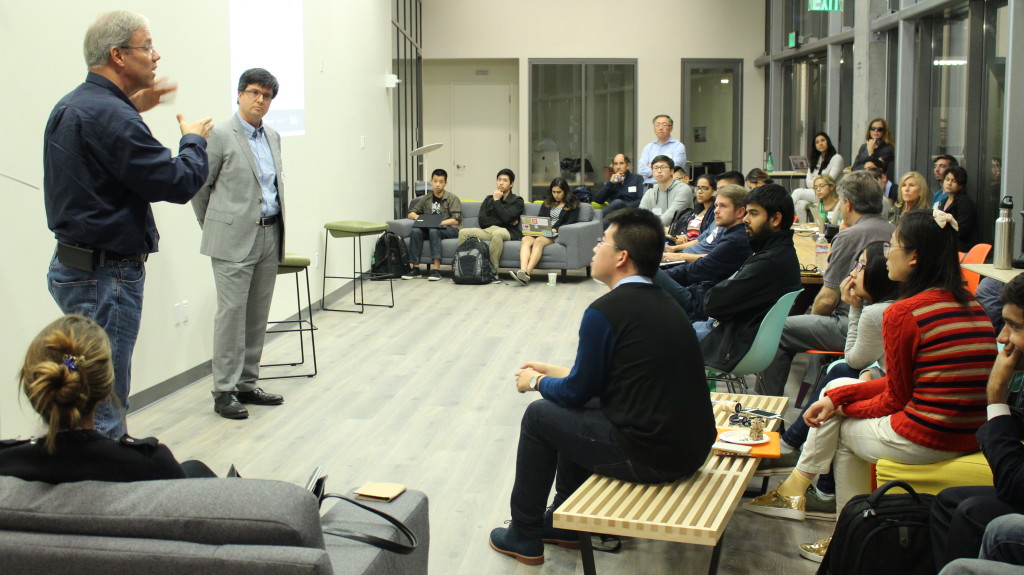The Blockchain Technology Collider Kick Off event, held in the new SCET office location inside Cal Memorial Stadium on Wednesday, was an at capacity event where students learned more about what blockchain is and how they would get to work with it in various aspects for a chance to win up to 5K.
The event was lead by Peter Shiau, CoFounder of Blockstack.io, Holger Assenmacher, Affiliated Professor for the Sutardja Center and Haas Accounting Professor, Jose M. Plehn-Dujowich. Peter and Holger described Blockchain as the underlying technology used in Bitcoin, andcontains the potential to change finance and banking as we know it. Shiau and Assenmacher explained blockchain’s transformative potential and how financial institutions could use the platform to build financial applications on a private blockchain.
The blockchain technology is a framework to create a shared, trusted, public ledger that everyone can inspect, but no single user controls. Assenmacher explained how blockchain was built behind the idea that “Consensus determines the Truth”. The technology makes it possible to have a currency without a central bank, and allows people who have no particular confidence in each other to collaborate. Shiau gave the example of ticketing for SuperBowl 50. He explained how blockchain could be used in buying and selling tickets securely. It would reduce the need for scalping, and potentially give event promoters and venue owners more visibility into the movement of their tickets. Shiau says that there are many useful cases for blockchain, specifically in medical technology, theme parks, wearables, and ticketing.

Professor Plehn-Dujowich described the benefits of blockchain and how the technology can be used as ledger for global companies. In the last year, $1 billion in venture capital has flowed into 120+ blockchain startups. Professor Plehn-Dujowich explained how blockchain is reliable since there is no single point of failure and transparent since transactions are visible to all participants. The problem is that over 99% of companies globally are private, and it is extremely difficult to verify a company’s identity. Public companies must report financial statements to regulators, but private companies have no reporting requirements. Giving the example of Google being a part of Alphabet, Professor Plehn-Dujowich pointed out that corporate family trees and M&A transactions make this even harder. The solution Professor Plehn-Dujowich elucidated was that companies should have internal records about other businesses, including firmographics and transactions. Companies could share their knowledge about the businesses they deal with, and transactions could be recorded in a ledger. Despite Bitcoin, blockchain technology has yet to achieve its “Netscape” moment that brings its promise to the mainstream. In 2015, the financial services industry began to invest in blockchain technology to reduce the cost and speed of back office processes.
Over 4 weeks, teams will come up with an innovative use-case for blockchain technology, talk to potential customers and leverage advisors, create a go-to-market plan and a mockup of their solution. During their final presentation they will present their ideas to a panel of blockchain experts, explaining the technology application, business model and demonstrating their solution. This project is designed to lead to new ventures, new innovations with collaborating firms, as well as project experience that can be used in the interview process for those interested in the related industries.

